2.4g wireless controller gamepad manual
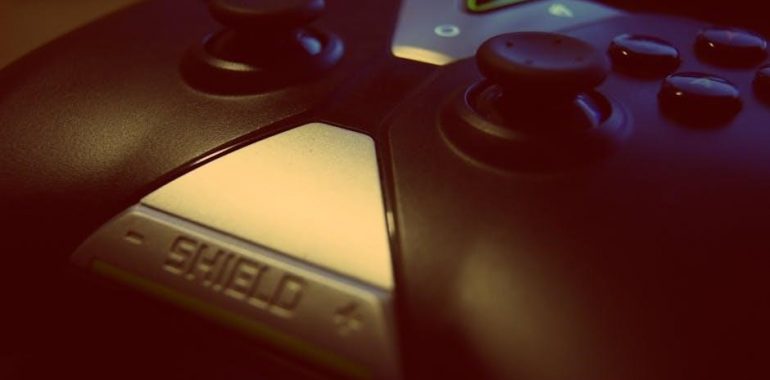
2.4g wireless controller gamepad manual
This section introduces the 2.4G wireless controller gamepad, designed for seamless gaming experiences. It highlights key features like wireless connectivity, intuitive controls, and compatibility with various devices. The manual guides users through setup, customization, and troubleshooting, ensuring optimal performance and longevity of the gamepad.
1.1 Overview of the Gamepad
The 2.4G wireless controller gamepad is a versatile and ergonomic gaming accessory designed for enhanced connectivity and comfort. Featuring a compact design, it offers intuitive controls, including buttons, joysticks, and a D-pad, ensuring precise gameplay. Compatible with multiple platforms, the gamepad supports wireless connectivity, making it ideal for PC, consoles, and mobile devices. Its user-friendly interface and durable construction provide an optimal gaming experience.
1.2 Key Features of the 2.4G Wireless Controller
The 2.4G wireless controller gamepad boasts a robust wireless connection, ensuring lag-free gaming. It features an ergonomic design for comfort, a long-lasting battery, and LED status indicators. Customizable buttons and joysticks allow personalized gameplay. Compatible with multiple platforms, it supports cross-device functionality. The gamepad also includes triggers and a D-pad for precise control. Its lightweight construction and durable build enhance portability and longevity, making it ideal for both casual and professional gamers.
Physical Components of the Gamepad
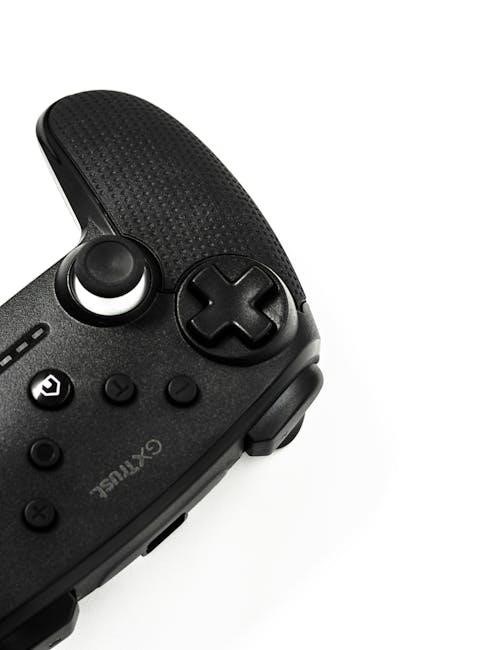
The gamepad features a sleek, ergonomic design with responsive buttons, dual analog joysticks, a D-pad, and triggers. Built for comfort and durability, it ensures precise control during gameplay.
2.1 Buttons and Their Functions
The gamepad features a variety of buttons designed for intuitive gameplay. The face buttons (A, B, X, Y) provide primary controls, while the D-pad offers directional navigation. Triggers and bumpers enable precise actions, and the start, select, and share buttons manage game and system functions. Additional buttons like the FN key allow customization of secondary functions, enhancing overall gaming flexibility and convenience.
2.2 Joystick Layout and Sensitivity
The gamepad features dual analog joysticks with an ergonomic layout, providing precise control during gameplay. The joysticks offer adjustable sensitivity, allowing users to customize responsiveness based on their preferences. LED indicators on the controller show the selected sensitivity level. The 8-directional joystick design ensures smooth movement and accurate input. Users can fine-tune joystick settings via software to enhance gaming performance. Proper calibration ensures optimal functionality across various gaming platforms.
2.3 D-Pad and Triggers
The D-Pad provides precise directional control, ideal for navigation and quick commands. The triggers are designed for responsive input, offering smooth activation for actions like shooting or accelerating. Both components are ergonomically placed for comfortable use during extended gaming sessions, ensuring intuitive and efficient gameplay.
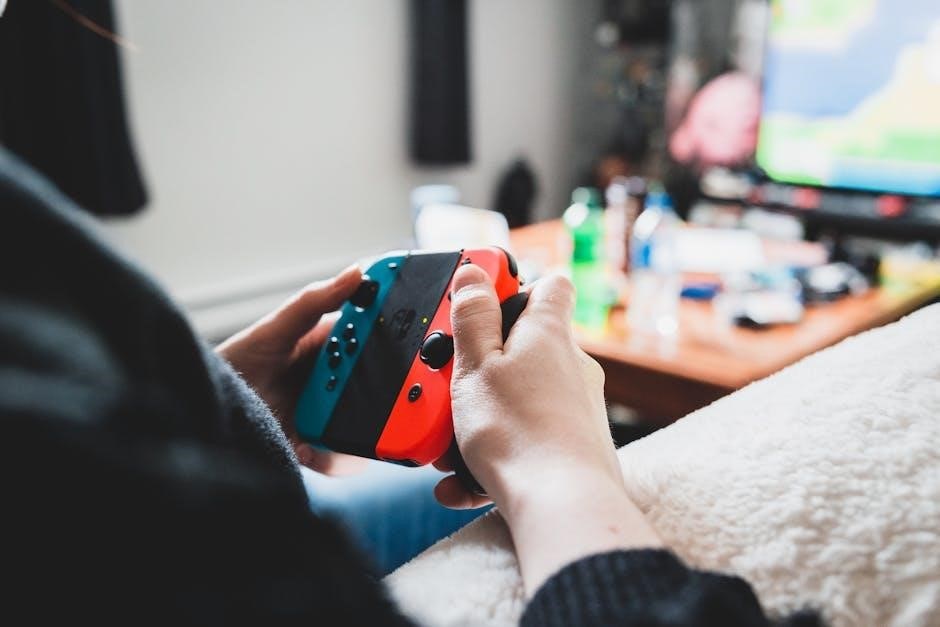
Compatibility and Device Support
This section details the compatibility of the 2.4G wireless controller with various devices, including PCs, gaming consoles, and mobile devices, ensuring versatile gaming experiences across different platforms.
3.1 Supported Platforms (PC, Consoles, Mobile)
The 2.4G wireless controller gamepad is compatible with a wide range of devices, including PCs, gaming consoles, and mobile devices. It supports Windows, macOS, and popular gaming platforms like PlayStation and Xbox. Mobile compatibility extends to Android and iOS devices, ensuring versatile use across different gaming setups; The gamepad’s universal design allows seamless connectivity, making it a great option for cross-platform gaming experiences.

3.2 Device Pairing Requirements
To pair the 2.4G wireless controller with your device, ensure the gamepad is in pairing mode by sliding the 2.4G/OFF/BT switch to the “ON” position. Connect the included USB A to USB Type-C cable to your computer or compatible device. The controller is designed to work with PCs, consoles, and select mobile devices. Ensure your device supports 2.4GHz wireless connectivity for a stable connection. The actual product may differ slightly from manual illustrations.
3.3 Cross-Platform Functionality
The 2.4G wireless controller gamepad offers versatile compatibility, enabling seamless use across PCs, consoles, and mobile devices. Its universal design allows gamers to switch between platforms effortlessly, ensuring consistent performance. Whether connected to a PC via USB or paired wirelessly with a console, the gamepad delivers responsive controls. This adaptability makes it a convenient choice for gamers seeking a unified experience across multiple devices without compromising functionality or comfort.
Installation and Setup
Install drivers, pair the controller with devices via USB or 2.4G wireless mode, and configure settings for optimal performance across platforms.
4.1 Driver Installation for PC
To install drivers for the 2.4G wireless controller on your PC, plug the USB receiver into an available port. The system should automatically detect the device. If drivers are required, visit the manufacturer’s website to download the latest version. Follow the on-screen instructions to complete the installation. Ensure the controller is properly paired after installation. If issues arise, restart your PC and test the controller functionality. Proper installation ensures optimal performance and compatibility.
4.2 Pairing the Controller with Devices
Pairing the 2.4G wireless controller with devices is straightforward. For PC, plug the USB dongle into the port, ensure the controller is in 2.4G mode, and wait for the LED to confirm connection. For consoles, activate the controller’s pairing mode and follow on-screen instructions. Mobile devices may require adapters or built-in receivers. Ensure the device supports 2.4G connectivity for seamless pairing. The LED indicator will stop flashing once connected successfully.
4.3 Connecting to Multiple Devices
The 2.4G wireless controller gamepad allows seamless connection to multiple devices, enhancing versatility. Slide the 2.4G/OFF/BT switch to enable wireless mode. Plug the USB receiver into a device, wait for the LED to indicate pairing. For additional devices, repeat the process, ensuring proper pairing. This feature enables easy switching between devices, optimizing gaming experiences across platforms. Refer to the manual for detailed steps on managing multiple connections effectively.
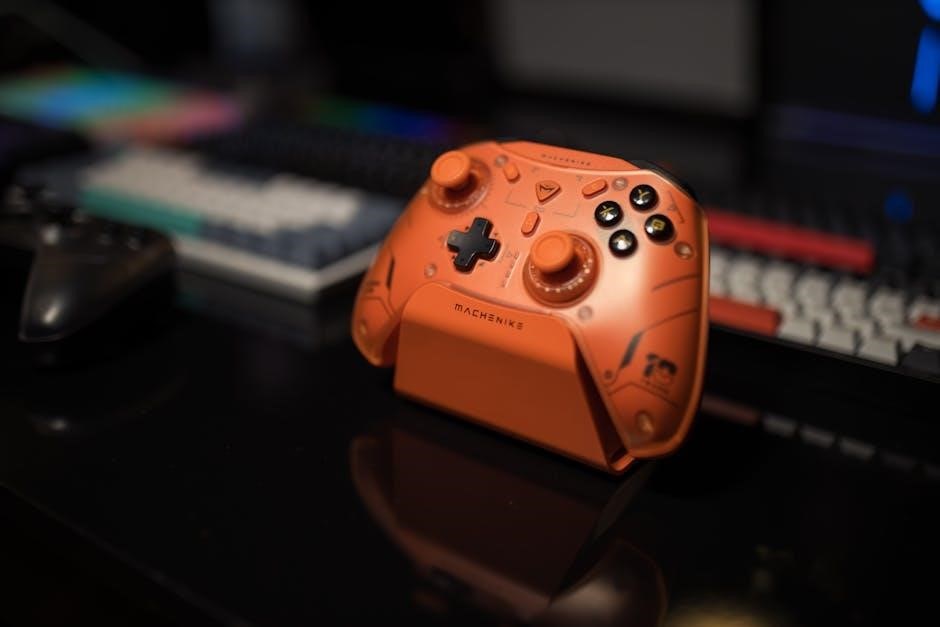
Customizing Controller Settings
This section explains how to customize your 2.4G wireless gamepad settings, including button mapping, joystick sensitivity adjustments, and creating custom profiles for enhanced gaming experiences.
5.1 Button Mapping and Configurations
Button mapping allows users to customize the layout of their 2.4G wireless controller to suit individual preferences. Through software, keys can be reassigned, and FN combinations enable advanced functions. This feature enhances gaming experiences by providing personalized control schemes. Users can create custom profiles for specific games or applications, ensuring optimal performance and convenience. The intuitive configuration process makes it easy to tailor the gamepad to your unique needs.
5.2 Adjusting Joystick Sensitivity
Joystick sensitivity can be adjusted to suit individual preferences, enhancing gaming accuracy and control. Use the included software or built-in controller settings to modify sensitivity levels. Higher sensitivity offers faster movement, while lower settings provide precise control. Adjustments can be made for both analog sticks, allowing customization for different gaming scenarios. Testing sensitivity settings in various games helps determine the optimal configuration for improved performance and responsiveness.
5.3 Creating Custom Profiles
Custom profiles allow users to tailor the gamepad’s settings for specific games or preferences. Access the software, select a profile slot, and configure button mappings, joystick sensitivity, and other settings. Save your configuration to easily switch between profiles. This feature enhances gaming efficiency by adapting to different gameplay requirements. Regularly update and organize profiles to maintain optimal performance across various applications. Ensure profiles are backed up to prevent data loss during software updates or resets.
Battery Management
This section covers essential tips for maintaining the gamepad’s battery. It includes charging methods, expected battery life, and indicators for low charge, ensuring prolonged usage and efficiency.
6.1 Charging the Controller
To charge the controller, connect the USB-C cable to the controller’s charging port and the other end to a PC or DC 5V adapter. The LED indicator turns red during charging. Full charge typically takes 2-3 hours. Avoid overcharging to maintain battery health. The LED will turn off when fully charged. Ensure the controller is turned off while charging for optimal charging efficiency.
6.2 Battery Life and Optimization Tips
To maximize battery life, charge the controller with a certified charger and avoid overcharging. Turn off unused features like LED lights or vibration modes; Store the device in a cool, dry place when not in use. Regularly update firmware to improve efficiency. Avoid draining the battery completely before recharging, as this can reduce its lifespan over time. Proper care ensures consistent performance and extends the controller’s battery longevity significantly.
6.3 Low Battery Indicators
The controller features low battery indicators to alert users when power levels are critical. The LED light flashes red continuously when the battery is low, ensuring timely recharge. Some models may also display on-screen notifications. When battery life is depleted, the gamepad will automatically turn off to conserve energy. Recharging is required to restore functionality. Always monitor these indicators to avoid interruptions during gameplay.
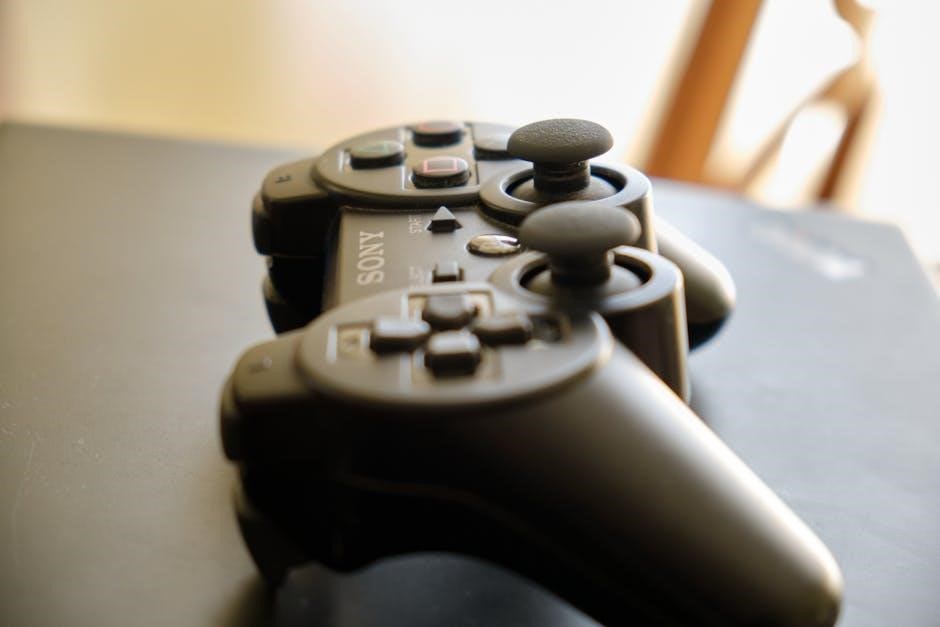
Maintenance and Care
Regularly clean the controller with a soft cloth and avoid harsh chemicals. Store it in a dry, protective case to prevent damage. Handle with care to ensure longevity.
7.1 Cleaning the Controller
To clean your 2.4G wireless controller, start by turning it off and disconnecting it from any devices. Use a soft, dry cloth to wipe down the entire surface, removing any visible dust or dirt. For tougher spots, dampen a cloth with water, but avoid soaking it to prevent liquid from seeping into the controller. Gently wipe buttons, joysticks, and crevices, using compressed air to blow out debris from tight spaces. Avoid harsh chemicals or abrasive materials. After cleaning, use a dry cloth to remove any moisture. Regular cleaning maintains performance and longevity, ensuring your controller remains in optimal condition for gaming sessions.
7.2 Storage Recommendations
To maintain your 2.4G wireless controller gamepad’s condition, store it in a cool, dry place away from direct sunlight and moisture. Use a protective case or original packaging to prevent scratches. Avoid extreme temperatures and ensure the controller is clean before storage. For long-term storage, fully charge the battery or remove it to prevent discharge. Regularly check for firmware updates before storing for extended periods to ensure optimal functionality upon reuse.
7.3 Protecting from Damage
To protect your 2.4G wireless controller from damage, handle it gently and avoid drops. Clean it regularly with a soft cloth to prevent dust buildup. Store it in a protective case or pouch when not in use. Avoid exposing it to extreme temperatures or moisture. Ensure proper charging practices to prevent battery damage. Regularly inspect for wear and tear, and replace damaged parts promptly to maintain functionality and longevity.

Advanced Features
Explore advanced features like customizable gaming modes, button mapping, and software updates. LED indicators provide real-time feedback, enhancing your gaming experience with personalized settings and seamless functionality.
8.1 Gaming Modes and Customization
The 2.4G wireless controller offers multiple gaming modes, such as FPS and RPG settings, to enhance gameplay. Users can customize button mappings, adjust joystick sensitivity, and personalize LED lighting. Advanced software allows for creating custom profiles, enabling tailored configurations for specific games. These features ensure a personalized and immersive gaming experience, catering to diverse player preferences and optimizing performance across different genres.
8.2 Software Updates and Firmware
Regular software updates and firmware upgrades are essential for maintaining optimal performance of the 2.4G wireless controller. These updates often include bug fixes, improved compatibility, and new features. Users can check for updates via the official website or dedicated software. Updating firmware involves connecting the controller to a PC, launching the update tool, and following on-screen instructions. Ensure the controller is fully charged before starting the process to avoid interruptions. A successful update is confirmed by LED indicators, typically a steady green light.
8.3 LED Indicators and Status Lights
The LED indicators on the 2.4G wireless controller provide essential status updates. The charging LED turns red during charging and green when fully charged. Connection status is indicated by a steady blue light when paired with a device. A flashing blue light signals pairing mode. Low battery is shown by a red blinking light. Additional LEDs may indicate active gaming modes or profile selections, ensuring users are informed about the controller’s current state at all times.
Safety Precautions
Handle electrical components carefully to avoid damage. Avoid overcharging the battery to prevent overheating. Dispose of batteries properly to minimize environmental impact and ensure safety.
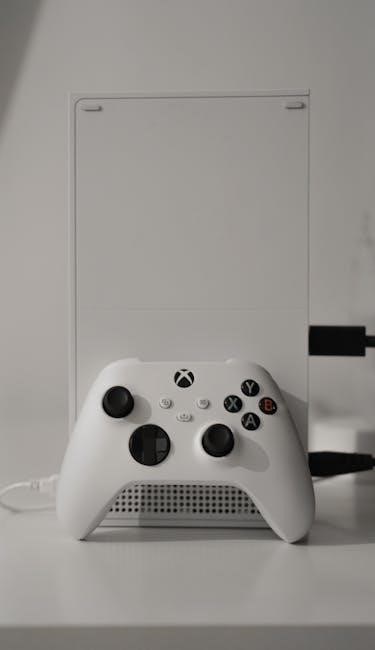
9.1 Handling Electrical Components
When handling electrical components of the 2.4G wireless controller, ensure dry hands and avoid touching sensitive parts. Use appropriate tools to prevent damage. Avoid exposing components to liquids or extreme temperatures, as this can cause malfunction. Regularly inspect cables and connectors for wear. Never force connections or bend wires, as this may result in permanent damage. Proper handling ensures longevity and safety of the device.
9.2 Avoiding Overcharging
To prevent battery damage, avoid overcharging the controller. Use the provided charging cable and avoid leaving it plugged in for extended periods. Monitor the LED indicator; it turns off when fully charged. Overcharging can reduce battery lifespan, so unplug promptly. Store the controller in a cool, dry place when not in use to maintain optimal battery health and ensure reliable performance over time.
9.3 Proper Disposal of Batteries
Proper disposal of batteries is crucial for environmental safety. Users should discharge batteries fully before disposal. Avoid mixing different battery types or disposing of them in regular trash. Recycle batteries through designated centers or retail programs. Ensure batteries are protected to prevent leakage or fire risks. Do not crush, puncture, or incinerate batteries. Always follow local regulations and guidelines for hazardous waste disposal to minimize environmental impact.
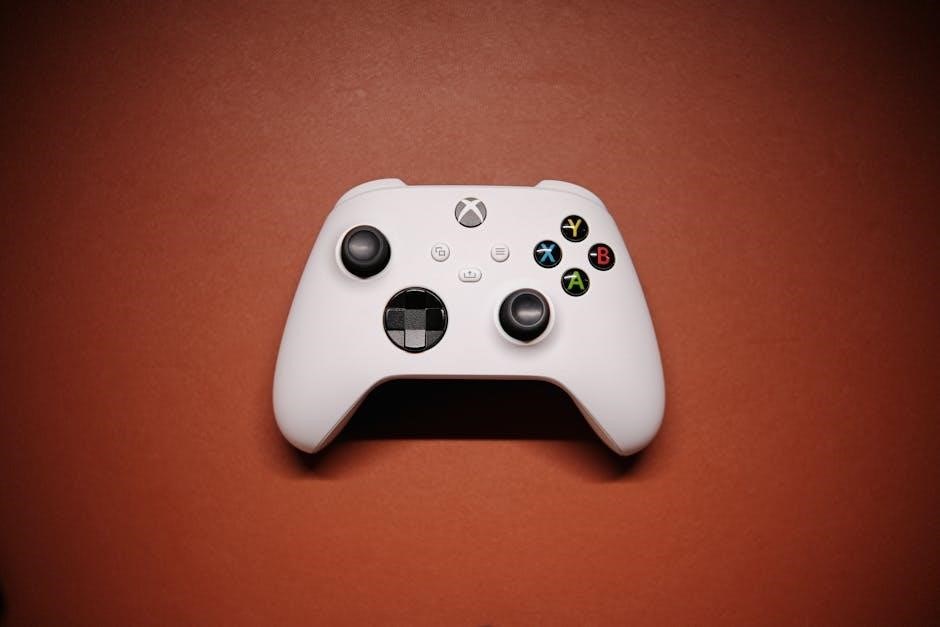
Troubleshooting Common Issues
Resolve connection problems by resetting the controller or reinstalling drivers. Address button or joystick malfunctions by cleaning or recalibrating components. For battery drain, ensure proper charging and avoid overcharging to maintain optimal performance.
10.1 Connection Problems
Common issues include intermittent connectivity or complete loss of connection. Ensure the USB receiver is properly plugged in and paired correctly. Check for interference from nearby devices. Restart both the gamepad and the connected device. Verify battery levels and replace if low. If issues persist, reset the gamepad by pressing the reset button with a pin. Re-pair the device following the manual instructions carefully.
10.2 Button or Joystick Malfunctions
Button or joystick malfunctions can disrupt gaming sessions. Common issues include stuck buttons, unresponsive joysticks, or drifting analog sticks. To resolve these, restart the controller, clean the buttons and joysticks with compressed air, and recalibrate the joysticks using the device’s software. If problems persist, update the firmware or contact customer support for further assistance. Regular maintenance and proper handling can prevent such malfunctions and ensure smooth gameplay.
10.3 Battery Drain or Charging Issues
If experiencing rapid battery drain or charging problems, ensure the controller is charged with the provided cable and avoid overcharging. Check for firmware updates, as outdated software can cause inefficiencies. Clean the charging port regularly to prevent connectivity issues. If problems persist, reset the controller by pressing and holding the reset button for 10 seconds. Consult the manual or contact support for further assistance.
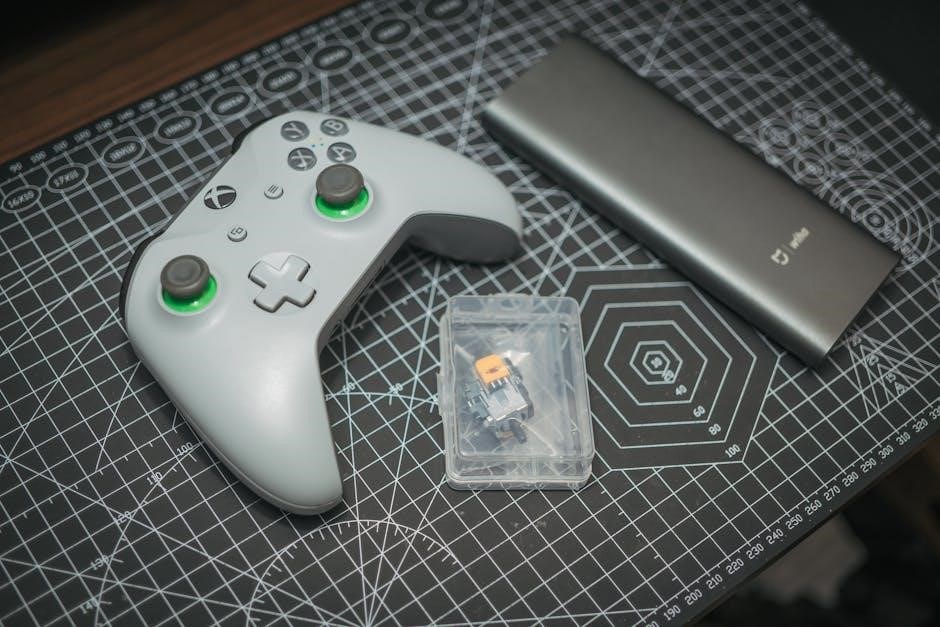
Warranty and Support Information
The gamepad is backed by a limited warranty covering manufacturing defects. For support, contact the manufacturer via email or visit their official website for resources and assistance.
11.1 Warranty Coverage
The 2.4G wireless controller gamepad is backed by a limited warranty covering manufacturing defects for a specified period, typically one year from the purchase date. This warranty ensures repair or replacement of faulty components, excluding damage caused by misuse or normal wear. For warranty service, contact the manufacturer or authorized distributors with proof of purchase. Terms may vary depending on regional policies and regulations.
11.2 Contacting Customer Support
For assistance, contact customer support via email, phone, or live chat through the official website. Include your order number, product details, and a clear description of your issue. Support is available Monday-Friday, 9 AM-5 PM EST, with responses typically within 24-48 hours. Ensure to verify contact information from the manufacturer’s official website to avoid unauthorized support channels.
11.3 Online Resources and Manuals
Access official resources and manuals via the manufacturer’s website, such as steelseries.com, for detailed guides, driver downloads, and troubleshooting tips. These resources often include PDF manuals, firmware updates, and compatibility charts. Additionally, user forums and FAQs provide community-driven solutions and insights. Always refer to official sources for accurate and up-to-date information to ensure optimal performance and compliance with warranty terms.
The 2.4G wireless controller gamepad offers enhanced gaming experiences with its wireless connectivity and intuitive design. Regular maintenance and proper care ensure longevity and optimal performance.
12.1 Final Tips for Optimal Use
For the best experience, regularly clean the controller to prevent dust buildup. Update firmware when available to ensure compatibility and performance. Use original chargers to avoid battery damage. Store the gamepad in a protective case when not in use. Maintain a stable connection by keeping the receiver away from interference. Explore custom profiles for personalized gaming. Follow these tips to extend the life and functionality of your 2.4G wireless controller gamepad.
12.2 Importance of Regular Maintenance
Regular maintenance ensures the gamepad’s longevity and optimal performance. Cleaning the controller prevents dust buildup, while proper storage avoids physical damage. Protecting it from drops and spills safeguards electrical components. Following these practices enhances reliability and extends the product’s lifespan, ensuring consistent gaming experiences and minimizing repair needs over time.
12.3 Expanding Functionality with Accessories
Enhance your gaming experience with compatible accessories like charging cables, USB adapters, and gaming headsets. Visit steelseries.com for a wide range of accessories that complement your 2.4G wireless controller. These additions ensure seamless connectivity and extended functionality, optimizing your gaming sessions. Accessories like the USB A to USB Type C cable simplify pairing, while headsets and other peripherals enhance immersion. Explore options to customize and upgrade your setup for a superior gaming experience.